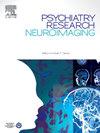抑郁症患者与对照组之间特定频段、睡眠阶段和大脑区域的夜间相对功率趋势的比较
IF 2.1
4区 医学
Q3 CLINICAL NEUROLOGY
引用次数: 0
摘要
大多数关于重度抑郁症的脑电图研究检查了重度抑郁症患者和对照组之间频带特异功率的平均差异;然而,一些研究寻找权力的时间趋势差异。我们对544名重度抑郁症患者和1662名年龄和性别匹配的对照组进行了多导睡眠图研究,重点研究了夜间相对力量的趋势。我们试图在额外的653名抑郁症患者和1959名年龄和性别匹配的对照中复制我们在重度抑郁症方面的发现。对于每个受试者,我们分别估计了由6个频段、5个睡眠阶段和6个大脑区域定义的180个特征的回归斜率趋势。在第二阶段(N2)非快速眼动(NREM)睡眠期间,重度抑郁症患者大脑额叶和中央区域的相对θ波功率随着时间的推移比对照组增加得更快。相似的相对θ波功率上升趋势在DD患者中也有统计学意义。如果在纵向研究中得到验证,NREM睡眠N2期相对θ波功率的时间趋势可能作为监测抑郁症患者对治疗反应的替代生物标志物。本文章由计算机程序翻译,如有差异,请以英文原文为准。
Comparison of overnight trends in relative power for specific frequency bands, sleep stages, and brain regions between patients with depressive disorder and matched control subjects
Most EEG studies of MDD examined mean differences in frequency-band-specific power between MDD patients and control subjects; however, a few studies looked for differences in temporal trends in power. We focused on overnight time trends in relative power using polysomnography studies of 544 patients with MDD and 1662 age- and sex-matched controls. We sought to replicate our finding on MDD with an additional 653 patients with depressive disorder (DD) and 1959 age- and sex-matched controls. For each subject, we estimated trends as regression slopes separately for 180 features defined by six frequency bands, five sleep stages, and six brain regions. Relative theta power during stage 2 (N2) non-rapid eye movement (NREM) sleep in the frontal and central regions of the brain increased more rapidly through time in MDD patients than in controls. Similar upward trends of relative theta power were also statistically significant in DD patients. If validated in a longitudinal study, the time trend in relative theta power in the N2 stage of the NREM sleep could potentially serve as a surrogate biomarker for monitoring the responses of patients with depressive disorders to treatment.
求助全文
通过发布文献求助,成功后即可免费获取论文全文。
去求助
来源期刊
CiteScore
3.80
自引率
0.00%
发文量
86
审稿时长
22.5 weeks
期刊介绍:
The Neuroimaging section of Psychiatry Research publishes manuscripts on positron emission tomography, magnetic resonance imaging, computerized electroencephalographic topography, regional cerebral blood flow, computed tomography, magnetoencephalography, autoradiography, post-mortem regional analyses, and other imaging techniques. Reports concerning results in psychiatric disorders, dementias, and the effects of behaviorial tasks and pharmacological treatments are featured. We also invite manuscripts on the methods of obtaining images and computer processing of the images themselves. Selected case reports are also published.

 求助内容:
求助内容: 应助结果提醒方式:
应助结果提醒方式:


